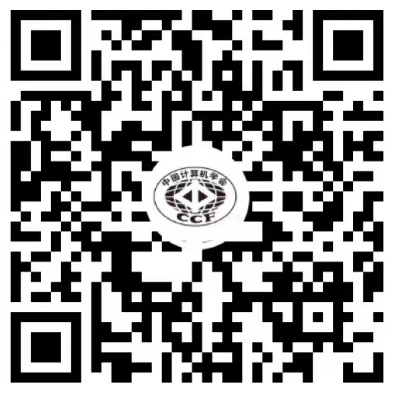联手人机交互专业委员会:“变形界面”术语发布 | CCF术语快线
本期发布术语热词:变形界面(Shape-Changing Interface)
变形界面
(Shape-Changing Interface)
作者:王冠云(浙江大学)、陶冶(浙大城市学院)、樊亦涛(浙江大学)
InfoBox:
中文名:变形界面
外文名:Shape-Changing Interface
学科:人机交互
实质:一种利用设备形态变化进行信息输入和输出的物理交互界面,其目的在于增强用户与信息之间的交互方式。
研究背景:
“计算机界面无处不在”。随着实体用户界面(Tangible User Interface)、有机用户界面(Organic User Interface)、自然人机交互界面(Natural User Interface)的发展,数字界面与物理界面的融合可以创造出便利友好的交互体验,极大地提高人们的生活品质,因此也成为未来计算、人机交互等领域的热点研究问题。与此同时,随着快速制造、个性化设计、可编程材料等技术的发展,变形界面(Shape-Changing Interface)[1]应运而生,为新一代数字与物理信息相融合的界面开发,提供了一种通过改变物理属性来传达信息、增强功能的新方式,其应用优势[2]在于:(1)可适应特殊场景或供特殊群体使用,增强设备功能可供性;(2)可辅助人们完成人力不可及的任务,增强人体功能;(3)可物理模拟在数字状态下难以理解的知识,增强知识的可理解性;(4)可将数字信息转化为视觉、触觉、体感等多通道媒介信息,增强数字信息的实体化交互体验;(5)可创造语义表征等感官或审美体验,增强非功能的交互体验。
研究概况:
变形界面的概念源于实体用户界面(Tangible User Interface)的驱动(Actuation)理论和技术的蓬勃发展。
麻省理工学院媒体实验室Tangible Media Group负责人Ishii等在1997年发表Tangible Bits[3]一文中,首次提出实体用户界面的概念,通过在物理对象中嵌入信息来弥补数字空间与物理环境之间的鸿沟。随后,实体用户界面的研究层出不穷,其中,Poupyrev等[4]在2007年指出,未来用户界面逐渐转向增强和实体用户界面,其发展不仅需要与数字信息耦合,其本身就是动态的,可根据界面接口、用户或环境进行自我重新配置,因此,变形界面将在实体用户界面中发挥重要作用。
2010年,Coelho等[1]明确提出了变形界面(Shape-Changing Interface)的概念,并重点关注以材料为主导的变形驱动知识在人机交互中的融入,有望突破物理界面在变形空间、控制技术和交互功能等方面的限制。其中,代表性工作是“空气驱动变形技术”在人机交互领域获得了长足发展,例如Kim等[5]将气球与定制传感控制系统结合,实现体积可变、压感交互的鼠标原型;Harrison等[6]通过定制模具加工硅胶和乳胶膜,增强了触控屏按钮的触感体验;Follmer等[7]将充气硅胶与定制传感控制系统结合,实现了可捏塑变形的电子设备;Yao等[8]使用定制模具灌注硅胶气动结构,结合定制电路为日常用品(如灯、平板电脑)增加变形交互功能;Ou等[9]利用密封气袋与砂纸的结合,设计出软硬可调的薄板界面和日常用品;Sareen等[10]使用定制可旋转热塑封机对热塑织物进行折叠和热压密封,创造了沙发、气动手臂外骨骼等大尺寸物品;Lu等[11]使用定制热气细管塑封机,在非弹性薄膜上加工形成毫米级气腔,增强了日常用品(如手套)的快速变形交互功能。可以看出,气动控制的变形界面在变形材料的研究、制作工艺的创造、形变方式的探索、形变效率的提升和应用空间的设计上发挥了很大作用,也为拓展变形界面研究提供了思路。
近年来,随着学科交叉的发展,有越来越多的材料、生物、机械等领域的研究被引入到人机交互领域中,驱动了以可编程材料为基础的变形界面研究。Roudaut等[12]使用介电活性聚合物和形状记忆合金创造出可变形移动设备;Yao等[13]使用定制液体打印机打印湿度响应的纳豆细菌材料,制作出由湿度触发弯曲和折叠的物品;Forman等[14]使用定制绕线机加工镀银尼龙线,利用电热来触发螺旋线的收缩和扭转,实现了可穿戴织物的变形;Tao等[15,16]基于可食用面食材料探索出有效的形变控制机制,提出变形食物设计空间;Wang等[17-19]探索了一系列4D打印变形机制和控制技术,为人机交互领域提供了多种变形界面的设计工具;Luo等[20,21]使用可降解木质材料创造出可自发钻土的种子载体,为变形界面技术解决人类可持续发展问题提供了新的研究思路。
未来展望:
变形界面研究旨在突破图形界面中对交互媒介的限制,通过引入可感知和可反馈的变形技术,增强数字信息与用户的互动。变形界面有望改变人机交互方式,提高交互效率与用户体验。然而,变形界面研究和发展仍然面临着诸多挑战,如技术研发中知识协同的挑战,材料研究中原理未知的挑战,软件开发中设计精度的挑战,硬件制造中制作精度的挑战,应用转化中功能效用的挑战,应用转化中交互体验的挑战。
目前,变形界面技术仍处于研究的初期阶段,距离商业化普及和工业应用还有较大距离。随着人工智能技术的迅速发展,具身智能等创新应用场景已成为未来社会的迫切愿望,变形界面领域的研究者将不断探索有效的信息有形载体与实现技术,为智能场景的构建和应用提供保障。
参考文献
[1]Coelho, Marcelo, and Jamie Zigelbaum. "Shape-changing interfaces." Personal and Ubiquitous Computing 15 (2011): 161-173.
[2]Alexander, Jason, Anne Roudaut, Jürgen Steimle, Kasper Hornbæk, Miguel Bruns Alonso, Sean Follmer, and Timothy Merritt. "Grand challenges in shape-changing interface research." In Proceedings of the 2018 CHI conference on human factors in computing systems, pp. 1-14. 2018.
[3] Ishii, Hiroshi, and Brygg Ullmer. "Tangible bits: towards seamless interfaces between people, bits and atoms." In Proceedings of the ACM SIGCHI Conference on Human factors in computing systems, pp. 234-241. 1997.
[4] Poupyrev, Ivan, Tatsushi Nashida, and Makoto Okabe. "Actuation and tangible user interfaces: the Vaucanson duck, robots, and shape displays." In Proceedings of the 1st international conference on Tangible and embedded interaction, pp. 205-212. 2007.
[5] Kim, Seoktae, Hyunjung Kim, Boram Lee, Tek-Jin Nam, and Woohun Lee. "Inflatable mouse: volume-adjustable mouse with air-pressure-sensitive input and haptic feedback." In Proceedings of the SIGCHI Conference on Human Factors in Computing Systems, pp. 211-224. 2008.
[6]Harrison, Chris, and Scott E. Hudson. "Providing dynamically changeable physical buttons on a visual display." In Proceedings of the SIGCHI Conference on Human Factors in Computing Systems, pp. 299-308. 2009.
[7]Follmer, Sean, Daniel Leithinger, Alex Olwal, Nadia Cheng, and Hiroshi Ishii. "Jamming user interfaces: programmable particle stiffness and sensing for malleable and shape-changing devices." In Proceedings of the 25th annual ACM symposium on User interface software and technology, pp. 519-528. 2012.
[8]Yao, Lining, Ryuma Niiyama, Jifei Ou, Sean Follmer, Clark Della Silva, and Hiroshi Ishii. "PneUI: pneumatically actuated soft composite materials for shape changing interfaces." In Proceedings of the 26th annual ACM symposium on User interface software and Technology, pp. 13-22. 2013.
[9]Ou, Jifei, Lining Yao, Daniel Tauber, Jürgen Steimle, Ryuma Niiyama, and Hiroshi Ishii. "jamSheets: thin interfaces with tunable stiffness enabled by layer jamming." In Proceedings of the 8th International Conference on Tangible, Embedded and Embodied Interaction, pp. 65-72. 2014.
[10]Sareen, Harpreet, Udayan Umapathi, Patrick Shin, Yasuaki Kakehi, Jifei Ou, Hiroshi Ishii, and Pattie Maes. "Printflatables: printing human-scale, functional and dynamic inflatable objects." In Proceedings of the 2017 CHI Conference on Human Factors in Computing Systems, pp. 3669-3680. 2017.
[11]Lu, Qiuyu, Jifei Ou, João Wilbert, André Haben, Haipeng Mi, and Hiroshi Ishii. "milliMorph--Fluid-Driven Thin Film Shape-Change Materials for Interaction Design." In Proceedings of the 32nd Annual ACM Symposium on User Interface Software and Technology, pp. 663-672. 2019.
[12] Roudaut, Anne, Abhijit Karnik, Markus Löchtefeld, and Sriram Subramanian. "Morphees: toward high" shape resolution" in self-actuated flexible mobile devices." In Proceedings of the SIGCHI Conference on Human Factors in Computing Systems, pp. 593-602. 2013.
[13]Yao, Lining, Jifei Ou, Chin-Yi Cheng, Helene Steiner, Wen Wang, Guanyun Wang, and Hiroshi Ishii. "BioLogic: natto cells as nanoactuators for shape changing interfaces." In Proceedings of the 33rd Annual ACM Conference on Human Factors in Computing Systems, pp. 1-10. 2015.
[14]Forman, Jack, Taylor Tabb, Youngwook Do, Meng-Han Yeh, Adrian Galvin, and Lining Yao. "Modifiber: Two-way morphing soft thread actuators for tangible interaction." In Proceedings of the 2019 CHI Conference on Human Factors in Computing Systems, pp. 1-11. 2019.
[15] Tao, Ye, Youngwook Do, Humphrey Yang, Yi-Chin Lee, Guanyun Wang, Catherine Mondoa, Jianxun Cui, Wen Wang, and Lining Yao. "Morphlour: Personalized flour-based morphing food induced by dehydration or hydration method." In Proceedings of the 32nd annual ACM symposium on user interface software and technology, pp. 329-340. 2019.
[16] Tao, Ye, Yi-Chin Lee, Haolin Liu, Xiaoxiao Zhang, Jianxun Cui, Catherine Mondoa, Mahnoush Babaei et al. "Morphing pasta and beyond." Science Advances 7, no. 19 (2021): eabf4098.
[17] Wang, Guanyun, Tingyu Cheng, Youngwook Do, Humphrey Yang, Ye Tao, Jianzhe Gu, Byoungkwon An, and Lining Yao. "Printed paper actuator: A low-cost reversible actuation and sensing method for shape changing interfaces." In Proceedings of the 2018 CHI Conference on Human Factors in Computing Systems, pp. 1-12. 2018.
[18] Wang, Guanyun, Ye Tao, Ozguc Bertug Capunaman, Humphrey Yang, and Lining Yao. "A-line: 4D printing morphing linear composite structures." In Proceedings of the 2019 CHI Conference on Human Factors in Computing Systems, pp. 1-12. 2019.
[19] 王冠云, 潘德瀛, 张雨阳, 陶冶, 孙凌云.4D打印变形设计策略研究[J].创意与设计, 2022(5):24-32.
[20] Luo, Danli, Jianzhe Gu, Fang Qin, Guanyun Wang, and Lining Yao. "E-seed: Shape-changing interfaces that self drill." In Proceedings of the 33rd Annual ACM Symposium on User Interface Software and Technology, pp. 45-57. 2020.
[21] Luo, Danli, Aditi Maheshwari, Andreea Danielescu, Jiaji Li, Yue Yang, Ye Tao, Lingyun Sun et al. "Autonomous self-burying seed carriers for aerial seeding." Nature 614, no. 7948 (2023): 463-470.
作者介绍
王冠云
单位:浙江大学
研究领域:智能材料与变形交互技术、4D打印
邮箱:guanyun@zju.edu.cn
陶冶
单位:浙大城市学院
研究领域:4D打印变形界面、数字工艺
邮箱:taoye@hzcu.edu.cn
樊亦涛
单位:浙江大学
研究领域:磁驱动变形界面技术
邮箱:ytfan@zju.edu.cn
计算机术语审定委员会及术语平台介绍:
计算机术语审定委员会(Committee on Terminology)主要职能为收集、翻译、释义、审定和推荐计算机新词,并在CCF平台上宣传推广。这对厘清学科体系,开展科学研究,并将科学和知识在全社会广泛传播,都具有十分重要的意义。术语众包平台CCFpedia的建设和持续优化,可以有效推进中国计算机术语的收集、审定、规范和传播工作,同时又能起到各领域规范化标准定制的推广作用。新版的CCFpedia计算机术语平台(http://term.ccf.org.cn)将术语的编辑运营与浏览使用进行了整合,摒弃老版中跨平台操作的繁琐步骤,在界面可观性上进行了升级,让用户能够简单方便地查阅术语信息。同时,新版平台中引入知识图谱的方式对所有术语数据进行组织,通过图谱多层关联的形式升级了术语浏览的应用形态。
计算机术语审定工作委员会:
主任(代理):
李国良(清华大学)
副主任:
王昊奋(同济大学)
主任助理:
李一斌(上海海乂知信息科技有限公司)
执行委员:
丁 军(上海海乂知信息科技有限公司)
林俊宇(中国科学院信息工程研究所)
兰艳艳(清华大学)
张伟男(哈尔滨工业大学)
委员:
柴成亮(北京理工大学)
彭 鑫(复旦大学)
李博涵(南京航空航天大学)
李 超(上海交通大学)
李晨亮(武汉大学)
杨 敏(中国科学院深圳先进技术研究院)
张 鹏(天津大学)
王昌栋(中山大学)
张宁豫(浙江大学)
孔祥杰(浙江工业大学)
魏 巍(华中科技大学)
术语投稿热线:ccfpedia@ccf.org.cn
 返回首页
返回首页




